|
No, the photo above was not take in Venice. It's Las Vegas--the Venetian Hotel and Casino. This photo has actually been mistakenly used to represent the real Venice in at least one well known article. It's all stage set, plastic, and chlorine treated pool blue water. “We are not going to build a ‘faux’ Venice,” said Sheldon Adelson, when he first announced plans for his Venetian resort and casino. “We’re going to build what is essentially the real Venice.” Really? 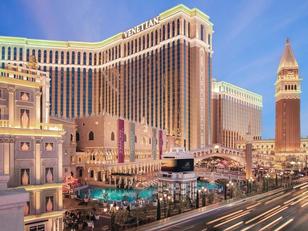 I mean, sure, the London Bridge has been in Lake Havasu City, Arizona since 1964... but it's the actual London Bridge, bought and paid for from England, stone by stone, rebuilt into a modern little town spanning a small man-made lake. But this "real Venice" in Vegas in the middle of Sin-City is all smoke and mirrors--plastic ones at that. Many who have been to the real Venice would tell Mr. Adelson, “You didn’t get the smell right”, (a compliment to Venezia). Venezia is real. It's history. It's gritty and more than just a little wet during the winter. You can get lost in its back streets in proximity and in time. Vegas is Vegas. It's for gamblers and posers or worse. It for shoppers looking for designer labels or tourist kitsch. It's a casino, a huge hotel and a shopping mall. It's for the lazy tourist. It's not for real Voyagers. In this Phony-Baloney Venice, a visitor can pull into the Doge’s Palace driveway and in one glance see St. Mark’s Square with its campanile, the twin columns topped by Saint Theodore and the winged lion of St. Marks, the Campanile, the Sansoviniana Library, the Ca’ d’Oro palace, and both the Bridge of Sighs and the Rialto. There are no driveways in the real Venezia. The Palazzo Ducale (the Doge's real name) has gondola slips just outside in the canal--no driveway. In the Vegas's Venetian Hotel, the gondoliers have to actually audition as singers and hired as entertainers. This is the primary concern when hiring a phoney-gondolier. In the real Venezia, gondoliers follow a 900 year tradition of fathers to sons (and recently, daughters), essentially being born into the profession. They have to take strict boating exams and are expert in both navigation and weather. Although some are know to have good singing voices, it's not a requirement to get a gondolier's license. In Vegas, their gondo-tainers wear walkie-talkies, boom microphones and perform on a schedule. In the real Venice, one has to wander, explore, take a gondola or water-taxi perhaps to other islands in the lagoon, or walk the back streets and canals to see all the mysteries and wonders the ancient city offers the real Voyager. That's what real Voyages are... a slow, purposeful exploration. Soaking in the light and smells and colors and tastes and sounds and textures of the environment. There's nothing phony about Italy or Venice. We suggest turning your back on places like these re-created phony vacation spots, including all things Disney, unless you have 4-7 year old kids. And even then, wouldn't you rather have your child experience walking in real dinosaur prints (yes, in Italy), seeing where real cavemen lived (Italy again), exploring real castles (everywhere in Italy), looking into the crater of a real volcano (Italy), seeing where real gladiators fought to their deaths (yep, Italy) and experiencing real snow-capped mountains (of course, in Italy)? And don't get us started on the authenticity of the food and the people... OK, and don't forget gelato for the kids. Come on... get real and get to the real Italy. --GVI  In the baroque town of Caltagirone, Sicily, the main attraction is its ceramics industry. The name of the town derives from the Arabic word qal’at-al-ghiran, meaning Castle of Vases. There are ceramics everywhere you look... as tile murals on buildings, as signs, and in the many ceramics shops just waiting for a savvy Voyager to select a few special pieces to take back home. But the tiles also adorn its stairways, the most majestic being the Scale di Santa Maria del Monte, built in 1608. Start to climb the 142 steps and you will be reading the town's history, each step telling their stories on hand-painted ceramic tiles that clad each stair’s riser. There are many fantastic characters, battle scenes, landscapes and symbolic patterns. It's a wonder to think that the staircase was rebuilt by the town after being destroyed by an earthquake in 1693 which destroyed most of the town. The Scale is a symbol of the town's resilience and rightfully, was honored as a UNESCO world heritage site in 2002.
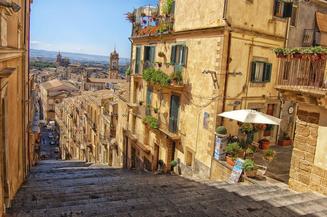 The view from the top The view from the top When you arrive at the top of this kaleidoscopic ascent, you turn around only to notice that the steps' colors have disappeared, seemingly to allow you to focus on the wonderful views of the town itself with its Baroque architecture. With tiles and ceramics being part of the architecture of the town, anyone who loves colorful ceramics would love visiting Caltagirone. You can see wonderful tile installations in its churches and palazzi, the Majolica Bridge of San Francesco, as well as in the Giardino Villa Comunale, a well cared for public garden. Worth a look are elaborate balcony of Casa Ventimiglia in Via Roma and Palazzo della Magnolia, in Via Luigi Sturzo with its terracotta embellishments. If you go:
Caltagirone is located 43 miles southwest of Catania in southern Sicily. You can get there by bus from Catania but a car is recommended. Today the town thrives on tourists and ceramic collectors who visit over 130 ceramics studios and shops. The style of ceramics here is called Maiolica (Majolica) and is distinctively different from other areas of Sicily. Worth visiting: Museo Regionale della Ceramica Examples of Sicilian ceramic objects dating from prehistoric times to the present day. One enters the museum through the so-called Teatrino (Little Theater), a belvedere dating from 1792 with steps and its decorated balustrade. Teatrino del Bonaiuto, Giardini Pubblici 96041 Caltagirone, Sicily, Italy Tel: 39 0933 58423 --GVI  Castello Scaligero in the commune of Sirmione sits on a thin peninsula jutting out into the southern end of Lake Garda. Essentially, the ramparts of the castle function as a small fortified harbor for what was the Scaligera fleet. The castle has a de facto moat (the surrounding lake) and even a drawbridge through which visitors enter. There are 146 steps which take you up to ramparts of the walls which look down upon the little harbor. There is a small walkway around which bowmen would be stationed to ward off any intruders from the lake in addition to defensive towers. Castello Scaligero is perhaps the best preserved castle from medieval times in Italy, constructed in the middle of the 13th century on top of the remains of an ancient Roman fortress. Taking over a century to build, two courtyards and an other fortifications were also added. In 1405 the Republic of Venice took control and strengthened the castle even further.  If you decide to visit, consider that in high season Lake Garda can get very busy. Still, there is so much to do in the surrounding area, even water parks and campgrounds if you're so inclined: Sirmione Historic Center - After visiting the Castello, take a stroll around the old town of Sirmione. There are shops, restaurants, gelaterias, pizzerias and beautiful architecture. Be sure to take in a passaggiata (stroll) at dusk to Piazza Callas and its pier that juts out into the lake. Archaeological site of Grotte di Catullo - Ruins of a sizable Roman villa on a peninsula with an olive grove & a nearby archeological museum. Can get crowded in high season but worth a visit. Camping Village San Francisco Mantua & Peschiera del Garda - Mantua is a wonder town surrounded by manmade lakes which create a huge moat. Peschiera del Garda is a "water" town--surrounded on all sides by the River Mincio which connects to the lake. Lake Garda Cruises GVI Travel Tip: Best visited in the off season.
|
Categories
All
Archives
May 2023
|



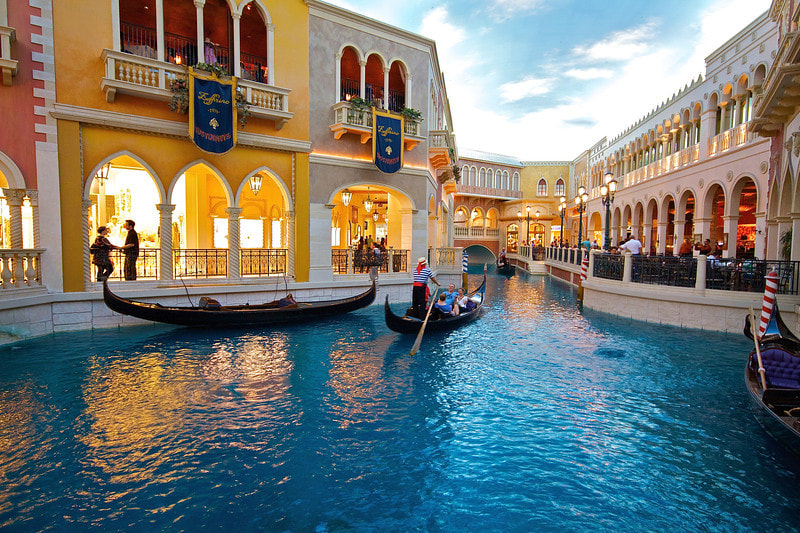






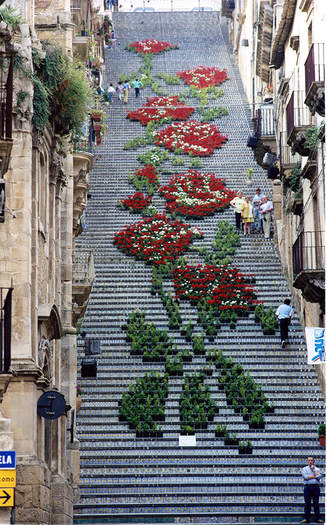


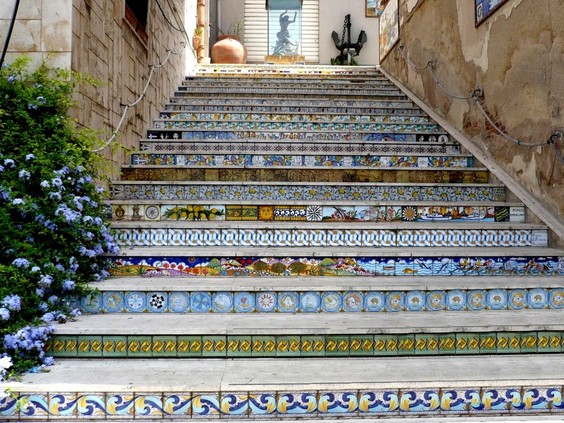


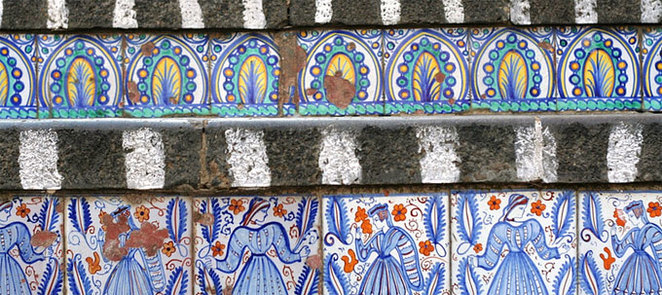


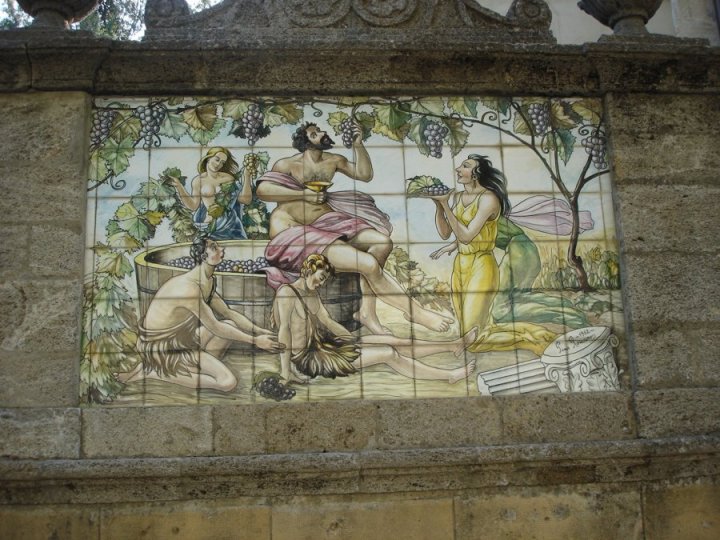


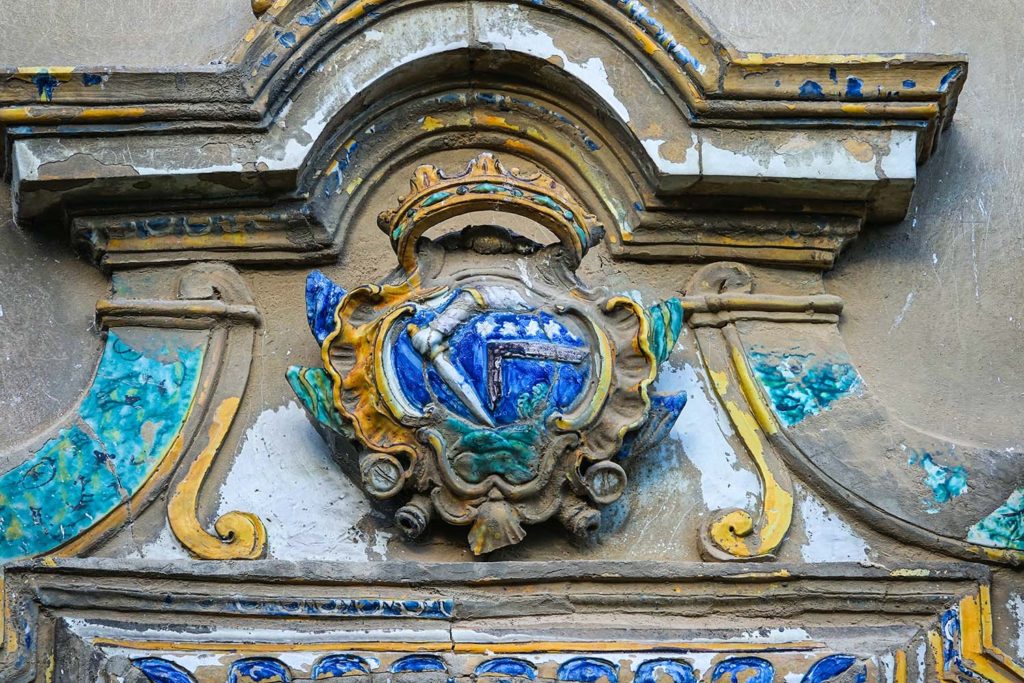

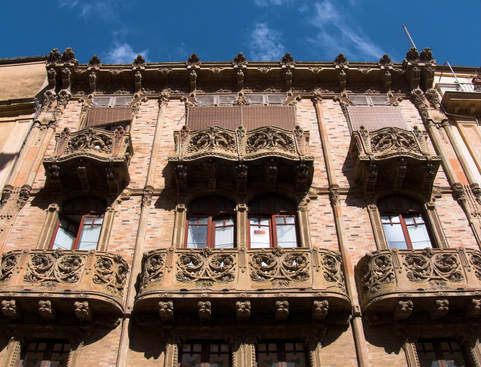




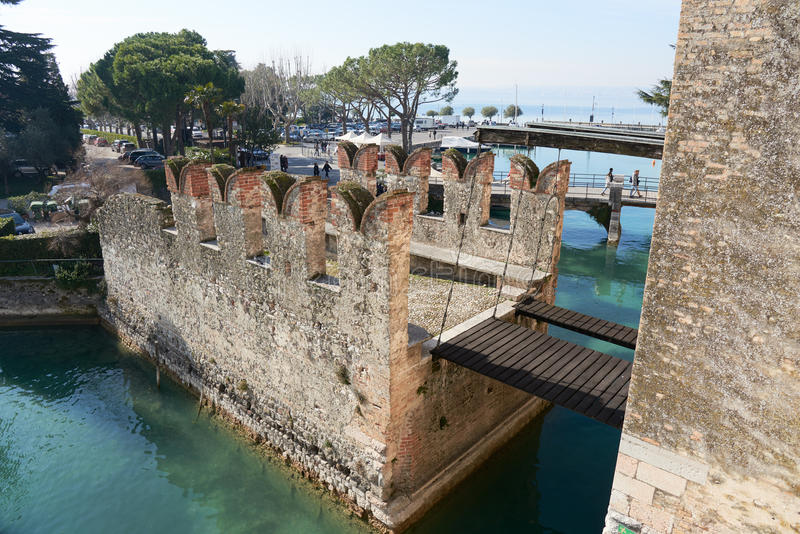


 RSS Feed
RSS Feed
